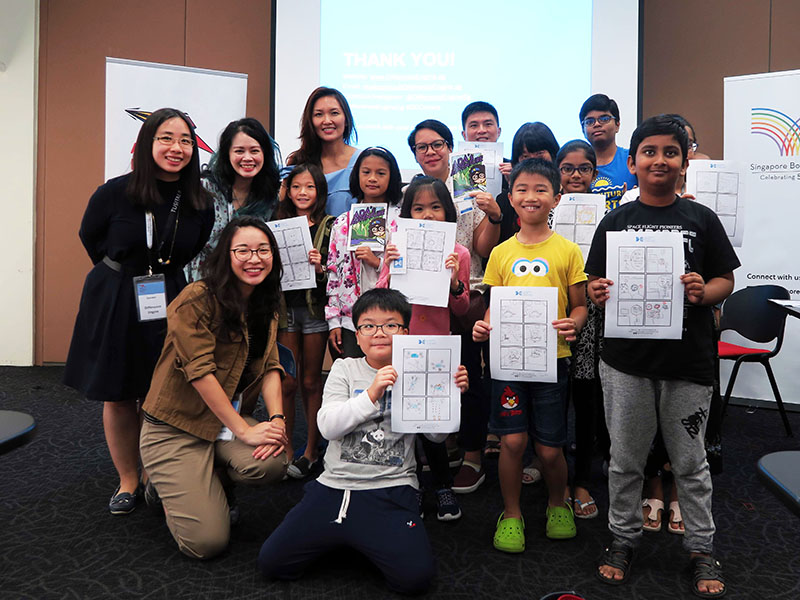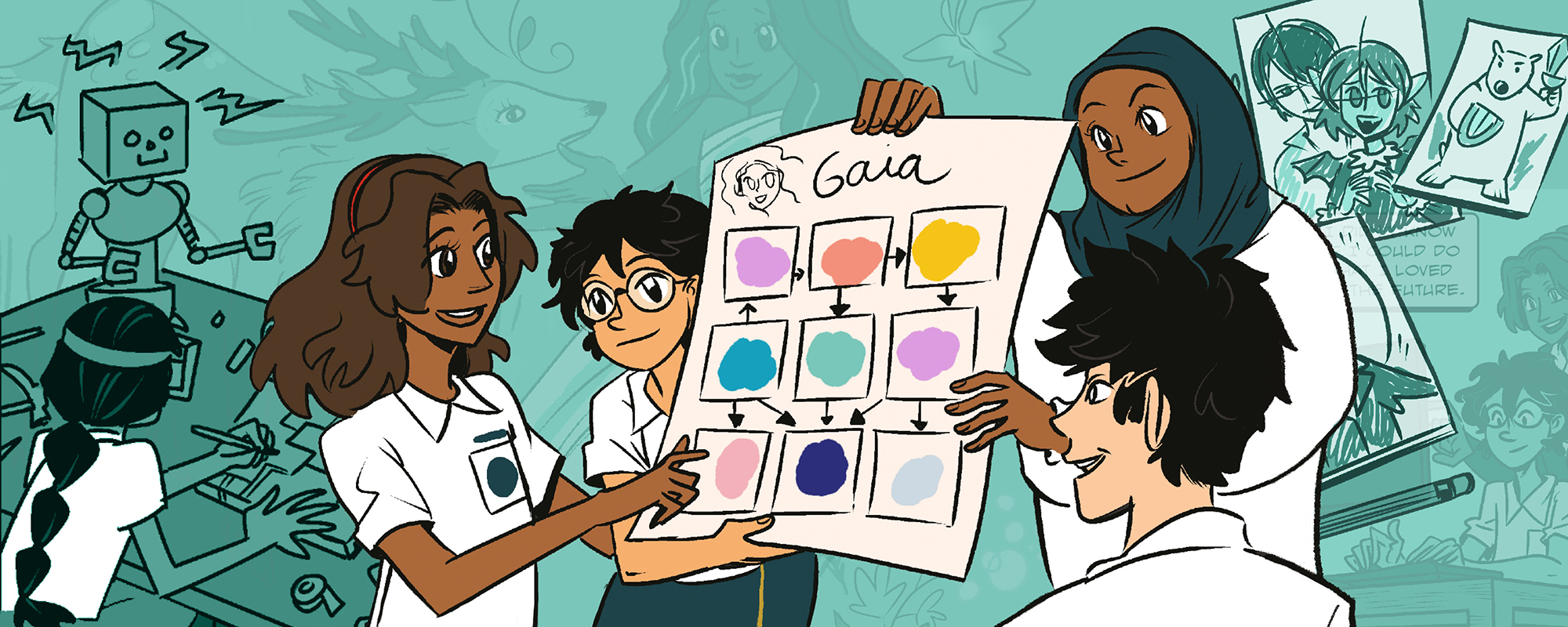How To Create Your Own Comic Book – For Parents & Educators
Last year end, the Difference Engine team partnered with Closetful of Books, a bookstore that specialises in selling and distributing children’s literature, to conduct a workshop on drawing comics.
Participants went home with their very own handmade comic book (complete with their own price tags – pricings ranged from $1million dollar per book to $1 per book!)
Whether you’re new to creating comics, or a parent or educator looking for ideas to work with your children, this simple guide to creating your own comic book will help you to jump-start your comics creation process.
Try it yourself!
Step 1. Create Your Character(s)
Together with the storyline, the characters propel the story forward. With a strong motivation and distinct, relatable personality, characters are more likely to appeal to readers and pull them into the story. With that in mind, we asked participants to come up with one or two main characters for their story, while considering their personality traits and interests. Oh, and did we mention superpowers?
Step 2. Plan the Story and Translate Them Into Sequential Art
The meat of the book – the story burning in you that’s ready to be released to the world. We’ll talk about the art of storytelling in another post – there’s just too much to say! However, once you’ve outlined the events of your story, one of the most exciting parts is translating the story into sequential art.
This means that words ordinarily found in the written story, such as “she whispered” can be translated visually. With this in mind, you can consider the size and shape of speech bubbles used, outlines, font choice, and placement of the speech bubbles within the panels – all of which can be adjusted to convey the sense of a whispered conversation. And that’s not even an exhaustive list.
Other aspects to consider also include the composition within each panel. There are many different angles to play around with, so you can challenge yourself to create interesting compositions for each frame.
Step 3. Illustrate the Front and Back Cover
Look at your story – which is the most provocative, attention-grabbing scene? The front cover art should be enticing, mysterious, and attractive to your audience, without giving away spoilers.
Since it is the first artwork that your potential readers will see, the front cover has to be immediately compelling in order to persuade your readers to pick it up. It also has to represent your story well because there’s nothing more disappointing than picking up a comic book with a brilliant cover, only to discover that the art inside is completely different.
On the back cover, consider adding a synopsis, as well as more information on the book such as an ISBN, a barcode, a price tag, and your publisher’s logo. Of course, since this is an exercise in imagination, feel free to come up with your own details.
That’s all for now – let your creative juices flow and have fun creating your own comic book!







